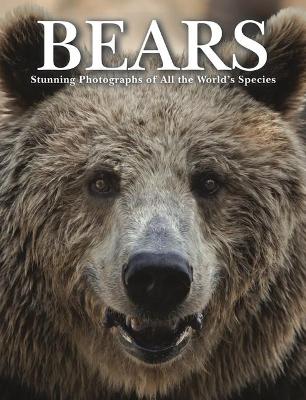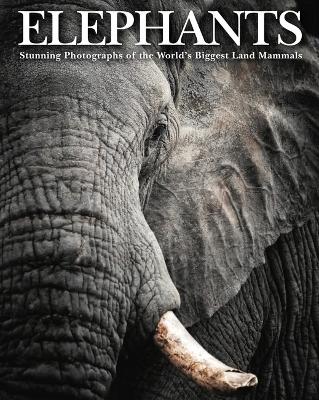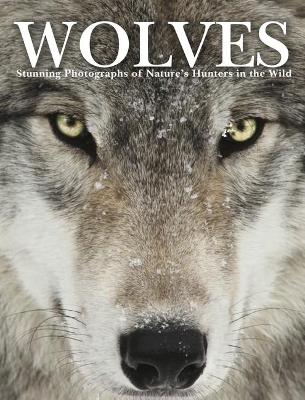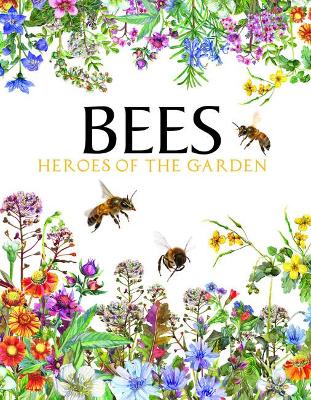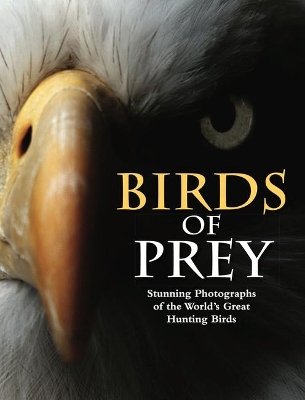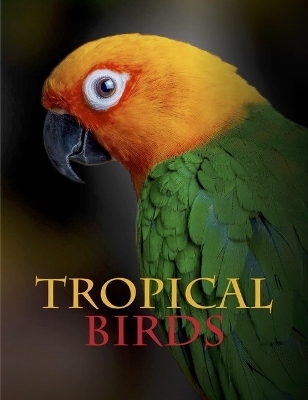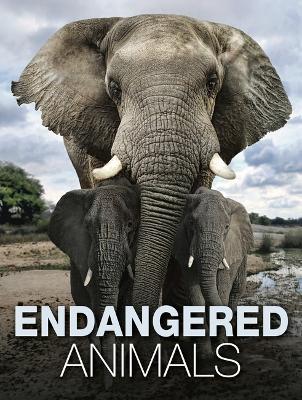Animals
11 total works
Arranged in chapters covering the different types of bear, their habitats, their family life, and cubs, the book reveals little-known facts on their anatomy, lifecycle, feeding and their young.
With full captions explaining how the species hunts and feeds, rears its cubs and migrates, Bears is a brilliant examination in more than 180 outstanding colour photographs of this fascinating animal.
Elephants is an outstanding collection of photographs and captions showing these majestic animals in their natural habitat. You'll discover how, yes, African and Asian elephants differ, but also about the different species or subspecies in each continent. You will learn how herds of female elephants and their young are formed, how they feed and use their tusks - elongated incisor teeth - as weapons or for moving objects or digging, how they use their ears to cool themselves and how intelligent they are - they're up there with primates and dolphins. They have captured the popular imagination for thousands of years and have been domesticated by humankind.,
Featuring the surviving species and subspecies, from African bush elephants to Asian pygmy elephants, the book explores how these fascinating animals hunt and feed, reproduce and rear their young, compete, defend each other from predators, and protect the herd.
Featuring 150 outstanding colour photographs, Elephants is a brilliant examination of the world's largest land mammal.
Wolves features a wide variety of wolf species from around the world, including: the Eurasian Wolf, Timber Wolf, Arctic Wolf, Northwestern Wolf, Yukon Wolf, Ethiopian Wolf, Tibetan Wolf and many more. It is an introduction to an animal that has fascinated, inspired and terrified people throughout history.
With full captions explaining how the species hunts and feeds, rears its young and migrates, Wolves is a brilliant examination in 150 outstanding colour photographs of this fascinating animal.
Penguins is an outstanding collection of photographs showing these intriguing animals in their natural habitat. You'll discover how penguins survive the frozen Antarctic; their short outer feathers overlap, like tiles on a roof, to form a thick waterproof layer, and underneath are fluffier feathers for warmth. They also huddle together to keep warm. How do penguins sleep? They take short naps during the day and evening. They have the unique ability to sleep while standing up or in the water.
Penguins features a variety of species, from the Emperor, Chinstrap and Adelie penguins in the Antarctic to the Magellanic, Southern Rockhopper and Yellow- crested Macaroni penguins of Chile.
With full captions explaining how these animals hunt and feed, rear their young and cope with such adverse weather conditions, Penguins is a brilliant examination in 150 outstanding colour photographs of this fascinating animal.
And bees produce honey - reputedly the food of the gods - a function of bees' lifecycle, which humans have exploited for millennia. Many bees today are domesticated, and beekeepers collect honey, beeswax, pollen, and royal jelly from hives for human use. A typical bee produces a teaspoon of honey (about 5 grams) in her lifetime. Bees can communicate many ways through the movement of their wings and bodies - most famously, with the 'waggle dance', where they make figure-of- eight circles to let other bees know the direction and distance of nectar.
With full captions explaining how bees live, function communally, communicate, feed and reproduce, Bees is an insightful examination in 190 outstanding colour photographs of mankind's favourite insect.
From the New World Caracaras to the Oriental Hobby, the Northern Goshawk to the Swamp Harrier to the European Merlin, Birds of Prey explores the fascinating lifecycles, habitats, diets and, where applicable, migratory patterns, of more than 100 species from all around the world.
They primarily hunt and feed on vertebrates that are large relative to the hunter. They have keen eyesight, being able to spot their prey from great distances, and strong feet equipped with talons for grasping or killing prey, and powerful, curved beaks for tearing flesh. In addition to hunting live prey, most also eat carrion, at least occasionally, and vultures and condors eat carrion as their main food source.
With full captions explaining how the species hunt and feed, nest and rear their young, Birds of Prey is a brilliant examination in 240 outstanding colour photographs.
Did you know that parrots can live for 80 years or more? Or that most tropical birds are omnivores and will eat seeds, nuts, fruit and insects, while a few will eat small lizards or animals? The world’s longest parrot is the stunningly bright hyacinth macaw (Anodorhynchus hyacinthinus), checking in at more than a metre from tip to tail.
From the screeching red-and-green macaw to the majestic great hornbill, from the rainbow lorikeet of northern Queensland to the endangered Spix’s macaw of the Amazonian rainforest, Tropical Birds explores the fascinating lifecycles, diets and, where applicable, migratory patterns, of hundreds of species from every part of the tropical belt.
With full captions explaining the origins, habitat and behaviour of these exotic creatures, Tropical Birds is a concise exploration in 180 brilliant photographs.
Arranged geographically, each photographic entry is supported by a fascinating caption, which explains the animal’s current plight and whether it is critically endangered or classified as vulnerable. From the Ethiopian wolf to the Bengal tiger to monk seal and dugong, Endangered Animals is a fascinating introduction to some of the most threatened species on the planet.
How does a mudskipper fish manage to “walk” on land? Why is the Hoatzin also known as ‘The Stinkbird’? And once the female Pipa toad has laid her eggs, where does she put them? The answers? The mudskipper can “walk” using its pectoral fins, the Hoatzin has a unique digestive system which gives the bird a manure-like odour, and the female Pipa Toad embeds its eggs on its back where they develop to adult stage.
Illustrated throughout with outstanding colour photographs, Strange Animals presents the most unusual aspects of 100 of the most unusual species. The selection spans a broad spectrum of wildlife, from the tallest land living mammal, the giraffe, to the light, laughing chorus of Australian kookaburra birds, from the intelligence of the Bottlenose dolphin to octopuses that change colour when they dream to the slow pace of the three-toed sloth.
Arranged geographically, the photographs are accompanied by fascinating captions, which explain the quirky characteristics of each entry. Including egg-laying mammals, birds, reptiles, amphibians, cannibalistic insects and other invertebrates, Strange Animals is a compelling introduction to some of nature’s most curious beasts.
With fossil records dating back 400 million years, sharks have outlived the dinosaurs and many other forms of life currently on earth – they are even older than trees. There are more than 1,000 species of sharks and rays, with new species discovered every year. Through their evolution, sharks have shaped our oceans into the rich habitats we know today. As apex predators, sharks play an important role in the ecosystem by maintaining the species below them in the food chain – helping remove the weak and sick, and keeping the ocean and fish populations healthy. Other deadly predators of the deep – such as the box jellyfish, lionfish and giant octopus – are also to be feared. Did you know the Stonefish is the most venomous fish species to swim in our oceans? Better not get too close – it has 13 dorsal fin spines that release deadly toxins when the fish gets into threatening situations. Learn about the dwarf lantern shark, which is so small it can fit in the palm of your hand; or the whale shark, which grow up to 12 metres (40ft) in length and is the largest known fish species in the oceans today; or the great white shark, the oceans’ top predator and capable of chewing up dolphins and seals with its 300 teeth. With full captions explaining the different species, behaviour and feeding habits, Sharks & Underwater Predators is a lively examination of these elemental killers in more than 180 vivid photographs.
Whales and dolphins alike are renowned for their intelligent nature and fascinating social rituals. Like us humans, they use vocalisations to communicate. They both have distinctive, streamlined body shapes and propel themselves through water using powerful tails and flippers. These magnificent mammals are frequently described as ‘sentinels’ of ocean health, providing key insight into marine dynamics and ecosystem quality. Whales are the largest marine mammals belonging to the Cetacea order (whales, dolphins and porpoises). Their incredible size continues to amaze us, the blue whale reaching an astounding 100ft (30.48 metres) and weighing as much as 200 tons. Dolphins, found in both oceans and freshwater, are actually classed as small- toothed whales. They are esteemed around the world for their sleek physical appearance and intriguing sounds used to communicate with each other. Did you know that porpoises are often shy creatures and therefore most of us will very rarely encounter them in the wild? Among their species is the vaquita, tragically the most endangered species of any whale, dolphin or porpoise. With full captions explaining the different species, behaviour and feeding habits, Whales & Dolphins is a vibrant look at these marine mammals in 180 vivid photographs.
